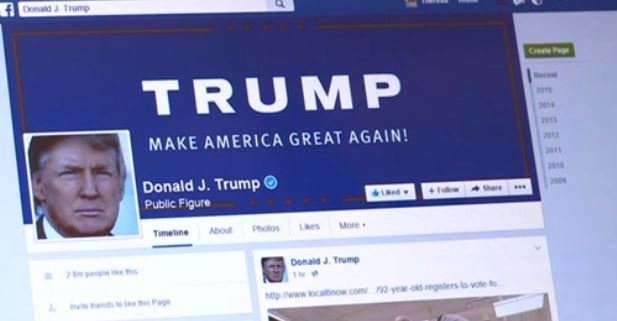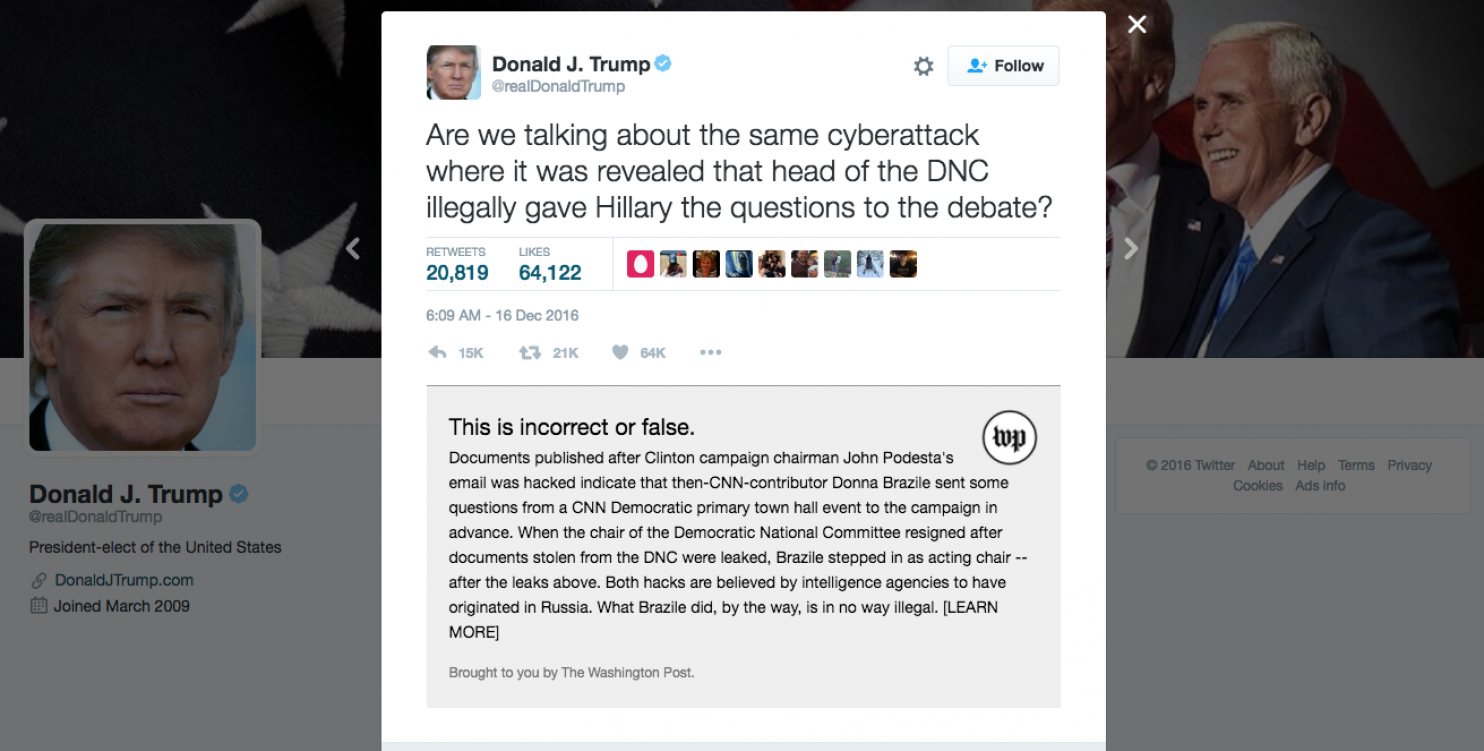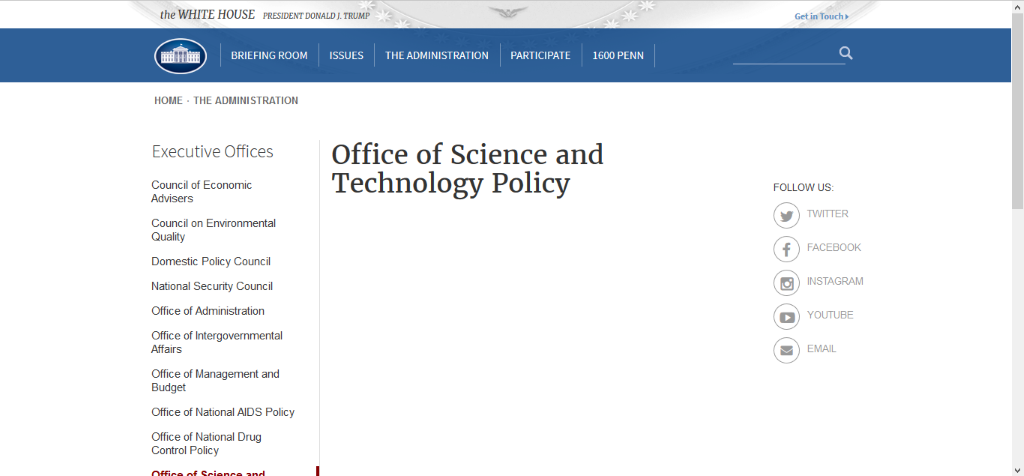
One Month In: The Trump Presidency and the Tech Industry
[ad_1]

Today is President’s Day in the United States, honouring George Washington’s birthday and the legacy of everyone who has held the office of President since. It also happens to be exactly a month since Donald Trump swore his oath of office and became the 45th President of the United States.
To call the month following the inauguration tumultuous would be an understatement of dramatic proportions. Barely 30 days in and the Trump administration is beset with bungled policy rollouts, withdrawn nominations for cabinet positions and allegations of corruption and Russian interference in the election.
To unpick everything that has happened in this period would take more space and time than we have, but focusing on the impact President Trump’s actions have had on the tech industry, and how it has reacted, will hopefully give us a clue how the rest of his presidency may unfold.
Air Farce One
In a month marked by controversy, the biggest uproar surrounded Trump signing an executive order temporarily banning travel into the US by citizens of certain Muslim-majority countries. Supposedly driven by security concerns, the move was met with widespread condemnation as families were separated, refugees were turned away and airports descended into chaos. The ban came into effect immediately but little effort seemed to have been made to prepare the various government agencies or private companies that would be impacted, leading to widespread confusion over chains of command and proper protocol. The ban has since been struck down by federal judges, prompting criticism by Trump on social media.
The US tech industry was fairly unanimous in decrying the travel ban. As a sector that often relies on high-skilled immigrants from around the world, many leaders in the tech world spoke out against the ban.
In the hours immediately following the ban, figures like Google’s Sergey Brin and Lyft’s John Zimmer and Logan Green pledged large donations to legal funds aimed at repealing it, while Airbnb CEO Brian Chesky announced that the service would be providing free housing to anyone not allowed in the US as a result of the ban.
As impromptu protests evolved into prolonged court cases, tech leaders went on to pen a letter standing against the ban, and more than 100 firms filed a brief supporting the State of Washington’s legal battle to repeal the order. Many of the same tech leaders had, during the transition, met with President-elect Trump during a supposedly tense meeting when he outlined how he hoped to support the industry, and what he hoped for from the tech sector.
It wasn’t all acts of corporate generosity in the tech world however. Uber’s Travis Kalanick and Tesla’s Elon Musk both faced criticism for their close ties to Trump. Musk promised he would ask for “specific amendments” at the next meeting of Trump’s economic advisory council, where both he and Kalanick served, while Uber’s CEO created a legal fund for drivers impacted by ‘immigration issues’.
Uber was also criticised for supposedly breaking a taxi strike taking place in solidarity with those protesting the bans, but later claimed it was simply attempting to guarantee protesters could get to and from airports easily. Kalanick later bowed to consumer pressure and stepped down from his place on the Trump economic council, but Musk remains, saying that he doesn’t necessarily agree with the administration on all points, and is focused on creating sustainable energy in partnership with the government.
With Trends Like These…
Despite taking the office of the Presidency, Trump has continued to use social media, and in particular Twitter, as his personal soapbox, taking to the service to launch attacks on everyone from US federal judges to Nordstrom’s department store and the cast of Saturday Night Live. The role that social media played in Trump’s election has continued to raise its head in the form of two particular spectres – online abuse and the ‘fake news’ problem.
Trump’s rise to political power appeared to tap into a particularly virulent subsection of social media users who saw his election as an excuse to step up racist, xenophobic and sexist attacks on other users.
In the week following Trump’s election victory, over 200 hate crimes were reported to the Southern Poverty Law Centre. During January, 60 separate bomb threats were called in against Jewish community centres in North America, and the Anti-Defamation League reported a “significant uptick” in anti-Semitic tweets during the second half of 2016.
Twitter has been plagued with issues surrounding abuse for a long period, but this new wave of hate speech (along with a failed sale to Disney which supposedly fell through due to this reason) seemed to finally spur the social network to action. Since mid-January, Twitter has announced a number of new initiatives aimed at curbing abuse on its platform, from increased transparency to service locks for serial harassers. Whether these changes will have the desired effect and revive the company’s ailing fortunes remains to be seen.
Meanwhile, Facebook has continued to address concerns over the platform’s use as a way to disseminate false or misleading stories from disreputable sources, the so-called ‘fake news’ that has become a buzz phrase for both pro- and anti-Trump camps.
The social network has updated its ‘Trending Topics’ section and, just before the inauguration, launched a new effort to reach out to established news publishers and ensure that their stories are favoured over false content designed to drive clicks.
A Tech-addled White House
So far, we’ve largely covered the tech industry’s reaction to President Trump’s actions. But how about the Trump administration’s own attitude towards the tech world?
Well, from a policy level, there is no obvious answer. During the campaign, Trump offered no major tech policy briefs and barely mentioned technology during speeches, only bringing up the subject to complain about Apple and Amazon jobs leaving the US.
The website for the White House Office of Science and Technology is currently blank, a potent symbol for an administration where its only tech-related policy initiative, an executive order on cybersecurity, has already been scrapped following significant criticism.
The one offical tech-related decision the Trump administration seems to have made has been for a new head of the Federal Communications Commission. His choice, Ajit Pai, has prompted widespread concerns over his attitude towards net neutrality, which was a central pillar of the FCC’s policies during President Obama’s tenure.
As for unofficial tech in the White House, information continues to leak from the controversy-beset administration, and staff have reportedly resorted to using Confide, a self-destructing messaging app, to enable them to communicate freely without leaving a digital ‘paper trail’, which could break a number of laws.
Trump himself raised concerns when it was revealed that he had continued to use an unsecured Android smartphone while President, despite being advised to give it up. California Congressman Ted Lieu went so far as to propose an investigation into Trump’s use of the phone, saying that the President “is jeopardising national security by egregiously failing to implement commonsense security measures across the board”.
Given that President Trump’s election victory can in part be laid at the feet of the FBI investigation into Democratic nominee Hillary Clinton’s private email server, his use of an unsecure, easily hackable channel for communications that almost certainly involve national security carries a heavy dramatic irony. In many ways, it’s the perfect symbol for an administration that currently seems perfectly happy barrelling along with its own agenda, unconcerned with the advice and opinions of both experts and the general public.
Source link





